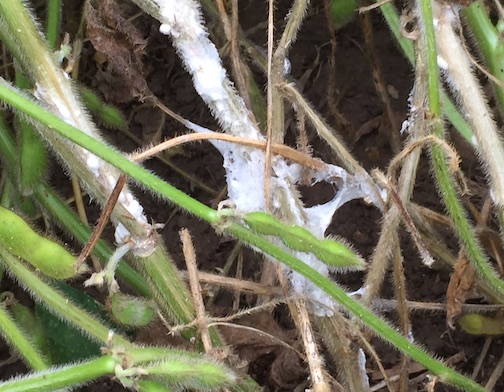Scout for White Mold, Even in a Dry Year
Aug 09, 2023

The dry summer hasn’t provided ideal conditions for white mold on soybeans (a.k.a. Sclerotinia stem rot) – it prefers damp conditions. But “it’s still a good idea to keep an eye out for it,” said Brad Hipsag, Federated ag sales rep at the Ogilvie location, and “right now is the best time to scout, at R3-R6.”
Fields with a history of white mold are most prone to the disease. And if there’s evidence of white mold this year, it’s important to take action to manage the beans for white mold in the future. Thus, the need to scout now.
Hipsag noted what to look for while scouting:
Fields with the most moisture this year, along with dense canopies, are prime targets for white mold. It thrives when temperatures are cooler and humidity is high.
If you find white mold at this point in the growing season, the best option is to manage it next year. Hipsag offered several options:
Don’t miss the window to scout your soybeans for white mold, and then make proactive plans for next year if you discover evidence of it. Talk to your Federated Agronomist with any questions or concerns.
Fields with a history of white mold are most prone to the disease. And if there’s evidence of white mold this year, it’s important to take action to manage the beans for white mold in the future. Thus, the need to scout now.
Hipsag noted what to look for while scouting:
- Symptoms include lesions on the node and stem, and those are eventually covered by a white fluffy growth.
- Foliar symptoms include a gray color between the leaf veins that can look similar to brown stem rot or sudden death syndrome.
- In more serious cases of white mold, leaves may turn completely brown, but do not necessarily drop off the stems.
Fields with the most moisture this year, along with dense canopies, are prime targets for white mold. It thrives when temperatures are cooler and humidity is high.
If you find white mold at this point in the growing season, the best option is to manage it next year. Hipsag offered several options:
- Select a soybean variety that is less susceptible to white mold (though no variety is fully resistant).
- Rotate crops away from soybeans for two to three years “if the field is infested badly enough,” said Hipsag. The sclerotia can stay in the soil for five or more years.
- Manage the canopy; use wider rows and lower plant populations. “The speed of canopy closure can increase disease development,” he said.
- Control weeds well; some broadleaf weeds are hosts of the sclerotia.
- Use a proven fungicide. Federated recommends Miravis Neo®, which can be sprayed twice: once at R1 at 20.8 oz./ac., and then again at R3.
Don’t miss the window to scout your soybeans for white mold, and then make proactive plans for next year if you discover evidence of it. Talk to your Federated Agronomist with any questions or concerns.